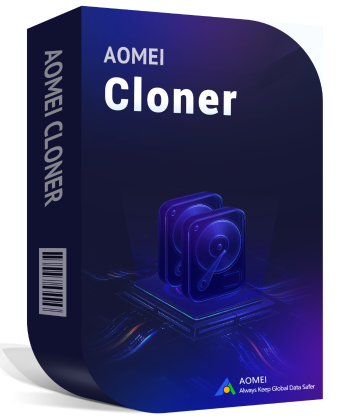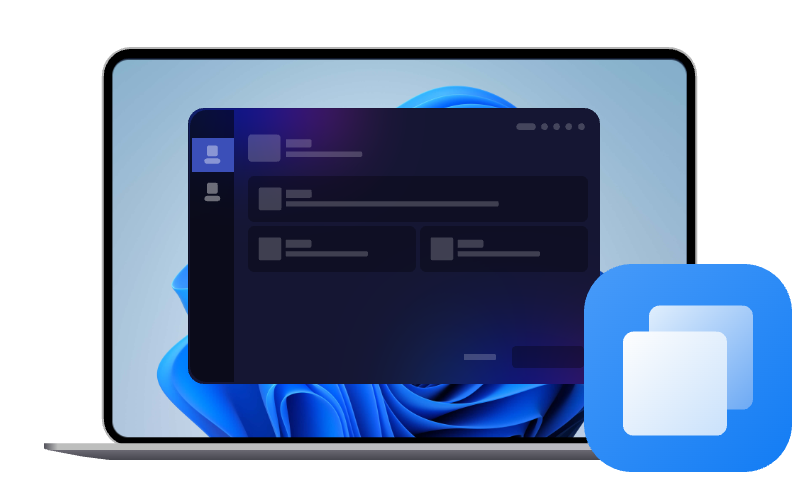[Best Practice] Upgrade PC Storage in Windows 10/11
In this article, you will learn the best practice to upgrade PC storage in Windows 10 and 11, with a hands-on guide to selecting disks and full upgrade process, which saves you a lot of time and minimizes human error.
Can I Upgrade PC Storage? (Spoiler: Yes!)
I’m looking to increase the storage on my pc, but I’m still pretty new to being on pc. What’s the best route I should take for purchasing storage devices and installing it to my pc?
- Question from Reddit
In most cases, when we find the computer stuck in not enough space issues, we will choose to uninstall some useless or old programs, delete large files, clean up disk, etc., to upgrade PC storage. But soon later, it runs into the same situation again, and there seems to be no end. It’s not a long-term solution, but how?
👑The best practice is to replace hard drive with a larger or faster one (like an SSD), which can significantly improve the overall computer performance. But it requires you to reinstall Windows on the new drive.
Luckily, you can choose to clone hard drive to another one using a reliable cloning software. It will include the operating system, installed programs, all data, etc. The cloned drive will remain bootable as well.
You can also add a second drive for additional space ✅ (if your system drive is an excellent SSD drive). It’s easier but not convenient, which requires you to take this drive everywhere, along with an adapter as well.
What’s more, we’ll show you the entire process, from pre-upgrade checklists to the exact steps.
Which Drive Should You Choose?
Before upgrading PC storage, it’s necessary to check your current storage first. You can then find the best upgrade option that’s compatible with your PC.
#1: Check Your Current Storage
The easiest method to check the current storage is from the disk’s properties. Navigate to Computer/This PC, right-click the local disk (C:) and select Properties. Switch to the Hardware tab, which will show all available drives on your PC.
Remember the disk model and look it up on the manufacturer’s website. Or directly search online for specific info. The key is to be sure of the disk types, capacity, interface, and physical dimensions.
- Disk types: HDDs or SSDs, usually with MBR/GPT partition style.
- Capacity: Usually, it’s suggested to get a larger hard drive. Otherwise, you will soon run into the issue of upgrading computer storage again.
- Interface: 2.5-inch SATA, M.2 (SATA and NVMe), PCIe (for NVMe SSD).
- Physical dimensions: 2.5-inch SATA SSDs are usually 7mm and 9.5mm thick, while M.2 SSDs vary in length, but are basically the same in width and thickness. For example, the common 2280 size is 22mm wide, 80mm long, and 2.21mm or 3.5mm thick, depending on the disk capacity.
#2: HDDs vs SATA SSDs vs NVMe SSDs
After getting the basics of your current storage, let's take a look at how to quickly choose a new hard drive or SSD. Usually, it depends on the usage need, disk type, capacity, interface, price, etc. Here are some quick tips and a straightforward comparison table to help you make your decision:
- ✅ Quick Tips:
- Select HDDs if you need high-capacity storage. 500GB is for everyday use, while 1TB or larger is for gamers, power users, mobile professionals, especially heavy multitaskers.
- For overall performance, SSDs >HDDs.
- In terms of speed, NVMe > SATA (but be sure if your system supports it).
- Always stick to trusted brands, such as Samsung, Crucial, Western Digital, Kingston, SanDisk, SK Hynix, etc., preferably with a 3–5 year warranty and good endurance (TBW ratings).
|
Aspect |
HDDs |
SATA SSDs |
NVMe SSDs(PCIe M.2) |
|
Ideal Users |
Budget users |
Everyday users |
Power users, gamers, mobile professionals |
|
Form Factor |
3.5" or 2.5" |
2.5" (SATA) |
M.2 2280 (for mostNVMeSSDs) |
|
Storage Range |
500GB –10 TB+ |
120GB – 4TB |
250GB – 4TB+ |
|
Speed (Read/Write) |
~100 –150 MB/s |
~500 – 550 MB/s |
2,000 – 7,000+ MB/s |
|
Boot Time |
30 – 60 seconds |
10 – 20 seconds |
5 – 10 seconds |
|
File Transfer |
Slow |
Fast |
Ultra-fast |
|
Noise & Vibration |
Audible |
Silent |
Silent |
|
Heat Generation |
Moderate |
Low |
Higher (especially Gen 4 models) |
|
Durability |
Mechanical parts, less durable |
No moving parts, more durable |
No moving parts, highly durable |
|
Compatibility |
Widely compatible |
Very compatible (older + newer systems) |
M.2 slot & PCIe required |
|
Price |
Lower |
Affordable |
More expensive |
🔥Top pick points:
- The most cost-effective drive is the Crucial MX500/Samsung 870 EVO/SK hynix Gold S31(SATA SSD) while the Samsung 990 Pro (NVMe Gen 4), with blazing speed, top-tier specs, is the most powerful drive.
- Power users, gamers, and mobile professionals prioritize read/write speed and durability, while heavy multitaskers require high capacity on top of that.
- If your computer disk is soldered, then consider using external disks. You need to check the USB port and see if it’s USB 2.0, 3.0, or 4.0.
How to Upgrade PC Storage in Windows 10/11
Before upgrading PC storage, please prepare a screwdriver and USB-to-SATA or M.2 adapter (for cloning hard drive externally). Also, you need to pick a reliable hard drive and SSD cloning software to upgrade PC storage.
- 🚖For standard SATA drives, especially on desktop computers, you need to prepare a SATA cable to connect the power supply and motherboard.
- 🚀For high-end NVMe SSDs, you still need to update BIOS and enable PCIe 4.0 (under the Advanced or NVMe settings tab.) to be sure you are getting Gen4 speeds.
AOMEI Cloner is a simple, powerful, and reliable disk clone software that can clone hard drive or SSD in Windows 7, 8, 10, 11, and servers without reinstalling. The cloned SSD remains bootable. For smaller drives, you can choose to clone OS only instead of the entire disk.

- Bootable clone - clone HDDs/SSDs and MBR/GPT system disks without boot issues (even if smaller).
- Intelligent clone (default)- only clones the used sectors of a drive, making it easier to clone large HDD to smaller SSD without capacity issues.
- Edit partitions - resize partition size on the destination disk, especially those with different disk partition styles(one MBR, one GPT).
- SSD alignment - align SSDs with 4k technology to improve disk performance and lifespan.
- SSD compatibility - compatible with Samsung, WD, SanDisk, Crucial, etc., regardless of the interface (e.g., SATA, M.2, NVMe, PCIe) you are using.
Step 1. Open the AOMEI Cloner after installing it, and click Clone > Disk Clone subsequently.
Step 2. In the Select Disk window, select the old hard drive you want to clone and click Next.
Step 3. In the Destination Disk window, select the new SSD drive (all data will be overwritten) and click Next. Click OK to continue.
Step 4 (Important). Be sure to check the SSD Alignment feature to align HDD and SSD for better performance. Try the Edit Partitions feature for smooth cloning in the following two situations.
- The target SSD drive is larger. Select “Add unused space to all partitions or “Manually adjust partition size. The former is recommended as it is adjusted automatically without human intervention and minimizes errors.
- Both drives have different partition styles (one MBR, and one GPT). Check the option “Convert the destination disk from MBR to GPT or vice versa to make them identical.
Step 5. Be sure your settings and click Start Clone to clone hard drive or SSD drives. By default, this software will enable the intelligent clone feature to clone only used sectors of a drive, greatly avoiding the cloned SSD won't boot issue (if it's smaller).
❗❗❗ After cloning, you need to swap both drives and test if it’s bootable. Don’t format the old drive until you are sure. Here, take laptops as an example (desktops are similar):
- Power off your laptop completely and remove the back panel to access the disk slot.
- Unscrew the screws securing the original drive or the slave slot. Please put them together for convenience.
- Gently remove the original drive and install the new drive in it, usually at a 30°or 45°angle. (If it’s a Samsung 990 Pro or other high-end NVMe SSD, you are advised to add a heatsink before installing it). For the slave slot, please directly install the new SSD.
- Reinstall the back panel and try to boot from the new hard drive or SSD.
Closing Words
You can easily upgrade PC storage if you choose the right drive and reliable cloning software - AOMEI Cloner. Usually, if you want a high-performance, SATA SSDs and NVMe SSDs are a better choice. Note that the price will be higher as well.
Adding an SSD drive to PC requires you to reinstall Windows on the new drive, but it’s time-consuming and tedious. This is where cloning software comes to the rescue, as it helps you migrate everything from one hard disk to another, including the operating system, and it's bootable after cloning.

